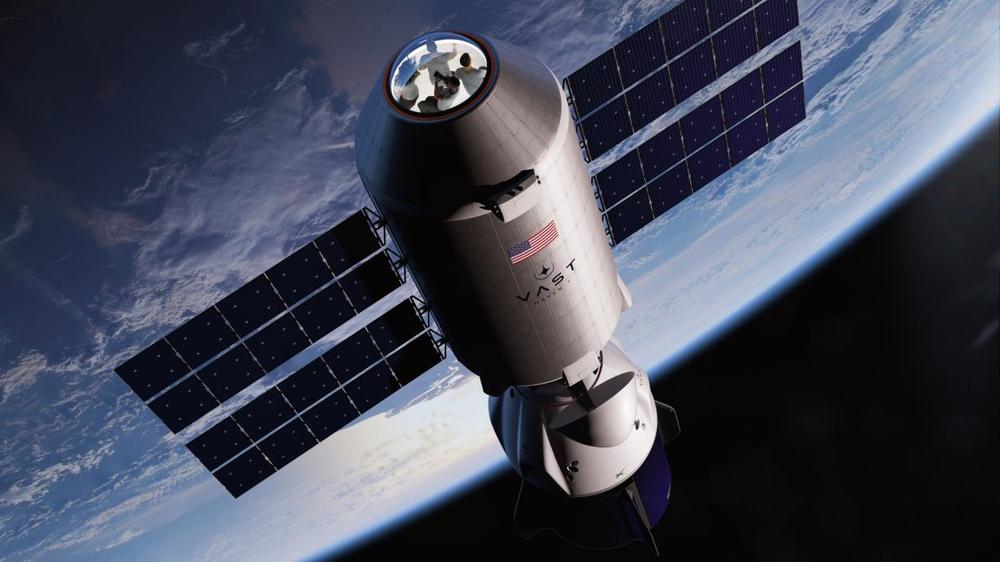About five years from now, a modified Dragon spacecraft will begin to fire its Draco thrusters, pushing the International Space Station out of its orbit and sending the largest object humans have built in space inexorably to the bottom of the Pacific Ocean.
And then what?
China's Tiangong Space Station will still be going strong. NASA, however, faces a serious risk of losing its foothold in low-Earth orbit. Space agency leaders have long recognized this and nearly half a decade ago awarded about $500 million to four different companies to begin working on "commercial" space stations to fill the void.
But in that time there has been precious little metal cut, and there are serious concerns about whether any of these replacement stations will be ready to go when the International Space Station falls into the drink.
On Monday, in one of his first official tasks, NASA Acting Administrator Sean Duffy signed a new "directive" on commercial space stations that seeks to address this concern.
"To meet the goals of a commercial system within the proposed budget, a modification to the current approach for LEO platforms is required as specified in the remaining sections of this directive," states the document, signed by Duffy. To succeed, he wrote, the strategy "must be altered."
NASA's previous plan involved issuing a "request for proposals" early next year as part of a competition that would have selected one or, at most, two companies to move forward into assembly and certification of their stations prior to flight. However, according to Duffy's directive, there is up to a $4 billion shortfall in the budget NASA was expected to receive, and what would be needed for this program. The president's budget request included $272.3 million in fiscal year 2026 and $2.1 billion over the next five years for the development and deployment of new commercial space stations.
Because of this plan's perceived shortcomings, with the new directive, NASA is making some substantial changes to the Commercial Low Earth Orbit Destinations Program moving forward:
- Instead of moving forward in Phase 2 with a firm, fixed-price contract for certification and services, NASA will extend the current program of Space Act Agreements awarded to "multiple" participants.
- There will be a "full and open" competition for interested companies to receive Space Act Agreements. NASA will award a minimum of two and preferably three providers within six months of the formal announcement of a proposal.
- NASA will shift the formal design, acceptance, and certification from this Space Act Agreement phase to a follow-on certification phase (so companies cannot get certified until after they fly).
- At least 25 percent of milestone funding will be withheld until after a successful in-space crewed demonstration of a space station.
- There is a new minimum capability NASA seeks, which is significantly less than the original "full operational capability" the agency sought. Now, the minimum required capability will be "4 crew for 1-month increments."
Changing the program completely
Some of these are rather big changes. The ongoing reliance on Space Act Agreements, for example, will allow companies more leeway in how they design their stations. Had the agency moved into a more structured contract, known as Federal Acquisition Regulations, NASA could have levied more specific requirements on the companies.
This approach of lowering the minimum capabilities will also give companies a better chance to develop operational space stations by 2030, when the International Space Station is expected to be deorbited.
Phil McAlister, who directed NASA's Commercial Space Division from 2005 to 2024, which included this commercial space station program, said the changes give NASA and the companies a chance for success, given that the agency's budget will be less than anticipated.
“How was NASA’s previous strategy for commercial stations going to work when they lost close to a third of their budget?" McAlister told Ars. "They had no chance. This gives them a chance."
It is unclear how widely this document was circulated before Duffy signed it on Monday. It appears to have been hastily written. Northrop Grumman, for example, is spelled two different ways. One source told Ars that senior leaders in NASA's space operations division were not made aware of the changes before the directive was distributed.
Winners and losers
About five years ago, NASA awarded initial space station development contracts to four different companies: Northrop Grumman, Blue Origin, Axiom Space, and Voyager Space. Since then, Northrop has dropped its effort and joined Voyager's team. There has also been some interest from other companies, most notably Vast, which is working with SpaceX to develop its initial space station.
Probably the most striking thing about the new directive is that it seems to favor Vast over NASA's original contractors. Specifically, Vast's Haven-1 module is designed for four astronauts to spend two weeks in orbit, and the company has a more straightforward pathway to building a station that would meet NASA's minimum requirements.
The other companies had been planning larger stations that would have more permanence in orbit, which matched NASA's original desires for a successor to the International Space Station. The new directive favors a company building up capabilities through interim steps, including stations with a limited lifespan on orbit.
"All the current players are going to have to do some kind of pivot, at least revisit their current configuration," McAlister said. "Certain players are going to have to do a harder pivot."
One industry official, speaking anonymously, put it more bluntly: "Only Haven-1 can succeed in this environment. That is our read."
The chief executive officer of Vast, Max Haot, told Ars that the company bet that starting with a minimum viable product was the best business strategy and fully funded that approach without government money.
"It seems like NASA is now leaning into an approach for the future of CLDs that is led by what industry believes it can achieve technically and build a credible business model around," Haot told Ars. "Seeing that information from contractors before committing to buying services can help increase long-term risk reduction. This seems similar to the successful approaches used by NASA for cargo and crew."
Vast has worked closely with SpaceX in the development of its station, to the extent that Haven-1 will largely rely on the Dragon spacecraft for life support and some other functions. Future stations, such as Haven-2, will have more independent capabilities.

 Battlefield 6 doesn’t scare Activision as Call of Duty is “too big to fail”: Report
Battlefield 6 doesn’t scare Activision as Call of Duty is “too big to fail”: Report